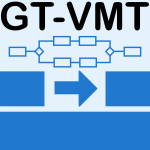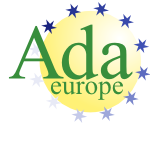17 papers:
 LATA-2015-MauriLMPZ #bibliography #complexity
LATA-2015-MauriLMPZ #bibliography #complexity- Complexity Classes for Membrane Systems: A Survey (GM, AL, LM, AEP, CZ), pp. 56–69.
 QAPL-2011-AmanC #petri net
QAPL-2011-AmanC #petri net- Time Delays in Membrane Systems and Petri Nets (BA, GC), pp. 47–60.
 CASE-2010-KrishnanSPW
CASE-2010-KrishnanSPW- Durability studies of PBI-based membrane elect rode assemblies for high temperature PEMFCs (LK, TS, RP, DW), pp. 21–26.
 CASE-2010-Puffer #automation #challenge
CASE-2010-Puffer #automation #challenge- Automation challenges and opportunities for high volume manufacture of proton exchange membrane fuel cell stacks (RHP), pp. 287–292.
 DLT-2010-PorrecaLZ #on the
DLT-2010-PorrecaLZ #on the- On a Powerful Class of Non-universal P Systems with Active Membranes (AEP, AL, CZ), pp. 364–375.
 WRLA-2008-AgrigoroaieiC09 #logic #specification
WRLA-2008-AgrigoroaieiC09 #logic #specification- Rewriting Logic Specification of Membrane Systems with Promoters and Inhibitors (OA, GC), pp. 5–22.
 WRLA-2008-AndreiL09 #calculus #proving
WRLA-2008-AndreiL09 #calculus #proving- Strategy-Based Proof Calculus for Membrane Systems (OA, DL), pp. 23–43.
 AFL-2008-Paun
AFL-2008-Paun- Membrane Computing: Recent Developments and Applications (Extended Abstract) (GP), pp. 350–351.
 SFM-2008-PaunR #case study #framework #modelling
SFM-2008-PaunR #case study #framework #modelling- Membrane Computing as a Modeling Framework. Cellular Systems Case Studies (GP, FJRC), pp. 168–214.
 CASE-2007-McVittieSMMLHM #automation #classification #using
CASE-2007-McVittieSMMLHM #automation #classification #using- Automated Classification of Macrophage Membrane Integrity using a Fluorescent Live/Dead Stain (PM, CSS, TWM, SM, MEL, MH, DRM), pp. 554–559.
 GT-VMT-2007-Paun #graph transformation
GT-VMT-2007-Paun #graph transformation- Membrane computing [and graph transformation] (GP).
 DLT-2006-Paun
DLT-2006-Paun- Languages in Membrane Computing: Some Details for Spiking Neural P Systems (GP), pp. 20–35.
 DLT-2006-PaunP
DLT-2006-PaunP- P Systems with Proteins on Membranes and Membrane Division (AP, BP), pp. 292–303.
 KDD-2003-SheCWEGB #predict
KDD-2003-SheCWEGB #predict- Frequent-subsequence-based prediction of outer membrane proteins (RS, FC, KW, ME, JLG, FSLB), pp. 436–445.
 ICDAR-1999-NakagawaYN #normalisation #recognition
ICDAR-1999-NakagawaYN #normalisation #recognition- An Off-line Character Recognition Method Employing Model-dependent Pattern Normalization by an Elastic Membrane Model (MN, TY, TN), pp. 495–498.
 HCI-EI-1999-VeierstedF
HCI-EI-1999-VeierstedF- Indoor Foliage Plants Reduce Mucous Membrane and Neuropsychological Discomfort Among Office Workers (KBV, TF), pp. 65–68.
 AdaEurope-1991-CurtisS #ada #modelling #using
AdaEurope-1991-CurtisS #ada #modelling #using- Modelling the Temporal Summation of Neural Membranes Using the Ada Language (MCC, VJDS), pp. 2–19.
 LATA-2015-MauriLMPZ #bibliography #complexity
LATA-2015-MauriLMPZ #bibliography #complexity QAPL-2011-AmanC #petri net
QAPL-2011-AmanC #petri net CASE-2010-KrishnanSPW
CASE-2010-KrishnanSPW CASE-2010-Puffer #automation #challenge
CASE-2010-Puffer #automation #challenge DLT-2010-PorrecaLZ #on the
DLT-2010-PorrecaLZ #on the WRLA-2008-AgrigoroaieiC09 #logic #specification
WRLA-2008-AgrigoroaieiC09 #logic #specification WRLA-2008-AndreiL09 #calculus #proving
WRLA-2008-AndreiL09 #calculus #proving AFL-2008-Paun
AFL-2008-Paun SFM-2008-PaunR #case study #framework #modelling
SFM-2008-PaunR #case study #framework #modelling CASE-2007-McVittieSMMLHM #automation #classification #using
CASE-2007-McVittieSMMLHM #automation #classification #using GT-VMT-2007-Paun #graph transformation
GT-VMT-2007-Paun #graph transformation DLT-2006-Paun
DLT-2006-Paun DLT-2006-PaunP
DLT-2006-PaunP KDD-2003-SheCWEGB #predict
KDD-2003-SheCWEGB #predict ICDAR-1999-NakagawaYN #normalisation #recognition
ICDAR-1999-NakagawaYN #normalisation #recognition HCI-EI-1999-VeierstedF
HCI-EI-1999-VeierstedF AdaEurope-1991-CurtisS #ada #modelling #using
AdaEurope-1991-CurtisS #ada #modelling #using









